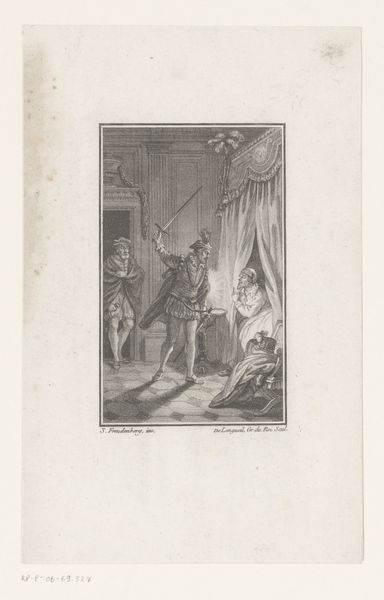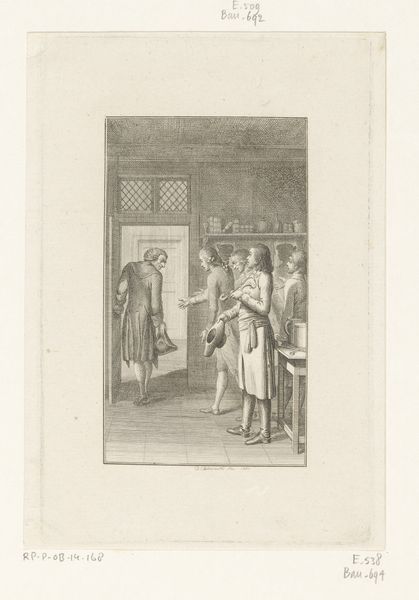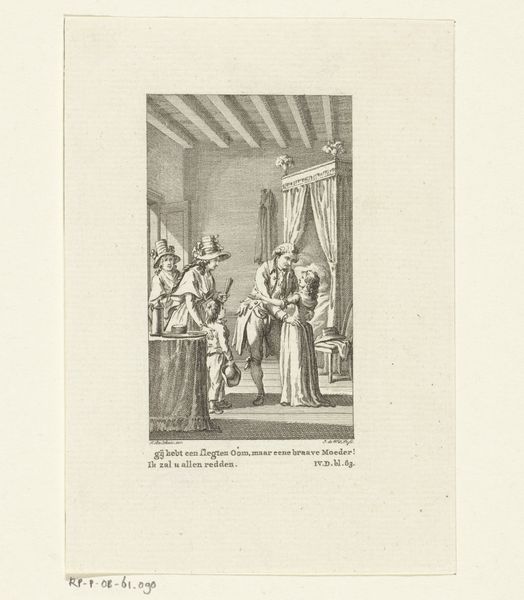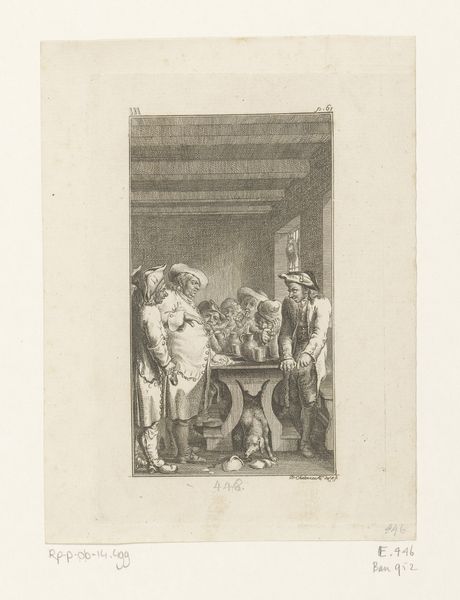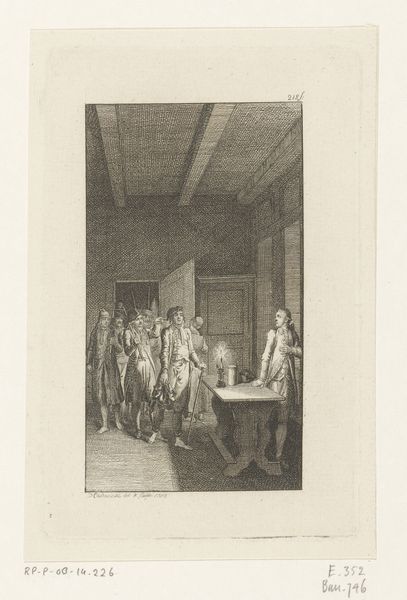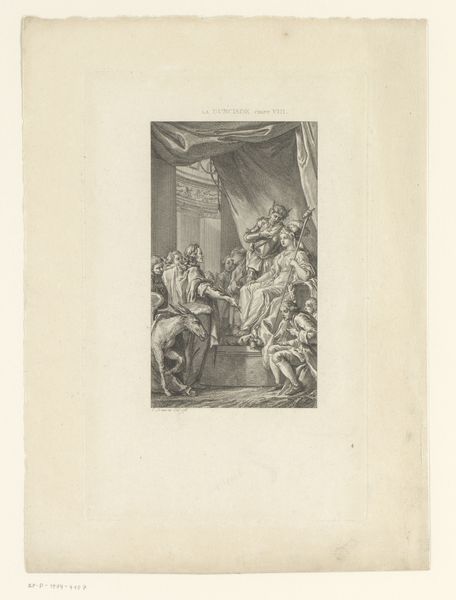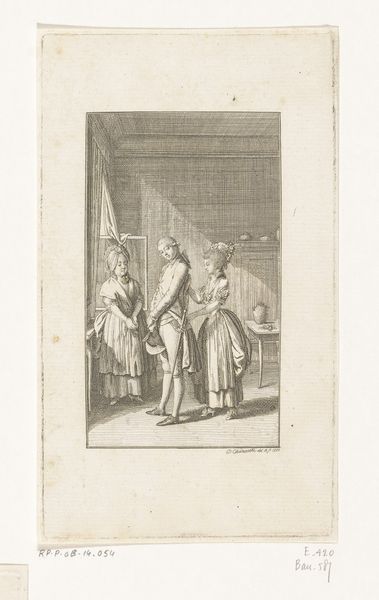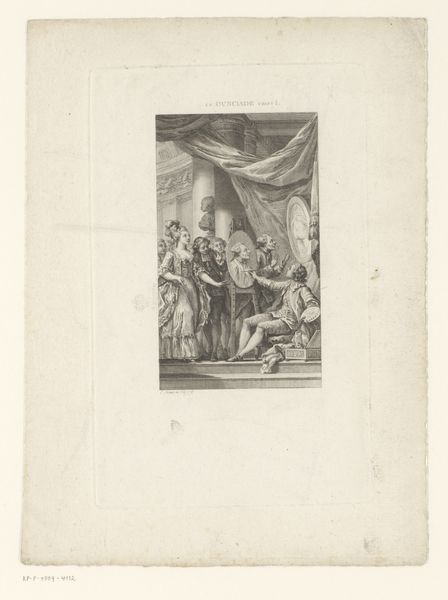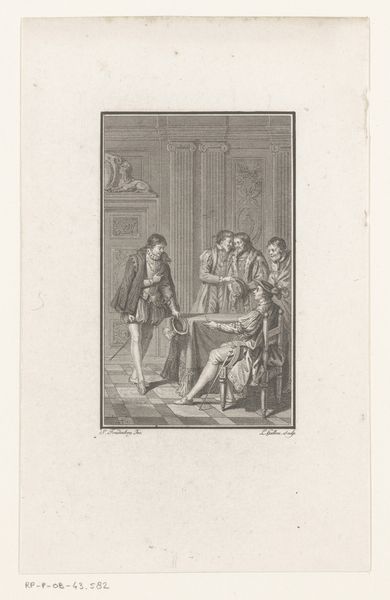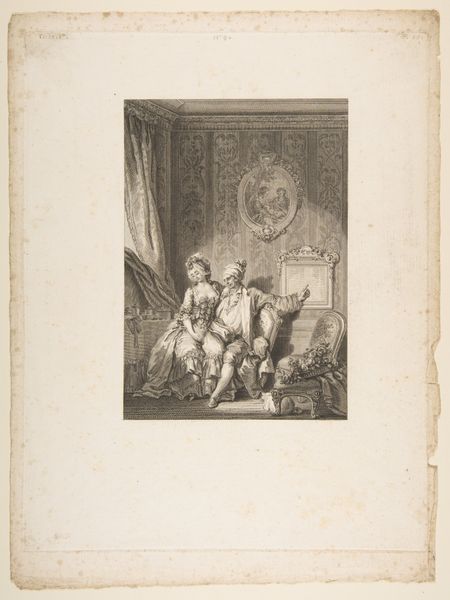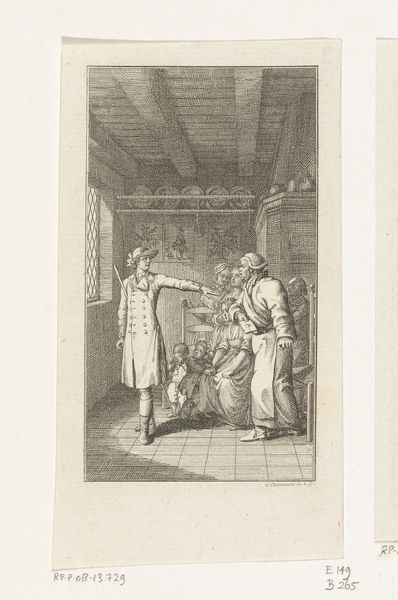
Drie artsen discussiëren naast het bed van een zieke man 1779
0:00
0:00
danielnikolauschodowiecki
Rijksmuseum
Dimensions: height 182 mm, width 124 mm
Copyright: Rijks Museum: Open Domain
Editor: This is "Drie artsen discussiëren naast het bed van een zieke man" (Three Doctors Discussing Next to the Bed of a Sick Man), an engraving made by Daniel Nikolaus Chodowiecki in 1779. The scene feels strangely tense; there's an argument brewing, and the patient seems utterly forgotten. What do you see in it? Curator: I see a potent commentary on the power dynamics inherent in 18th-century medicine and society. Notice how the sick man, presumably the center of attention, is relegated to the background, almost an afterthought. It reflects a broader issue: Whose voices are heard and valued in a system ostensibly built on care? Editor: That's interesting; I was focused on the almost theatrical gestures of the doctors. Curator: Precisely. It’s a performance of authority, a display of knowledge, but who benefits? We can consider it a critique of the patriarchal structure where learned men dominate discourse, often at the expense of the vulnerable, who here, we might argue, has been rendered voiceless by their very condition. What power did the patient hold? Editor: None, really. He is completely at their mercy. I suppose it does highlight how the “expert” opinion can silence the lived experience. Curator: Exactly. Chodowiecki uses the domestic setting to critique the universality of power structures, medical or otherwise. The bedroom, usually a place of rest and intimacy, becomes a stage for the exercise of social dominance. What does this engraving say about class as a barrier in accessing fair health care, even in the late 1700s? Editor: It reveals that the power imbalances aren't just about gender but are compounded by economic and social status. The doctors’ elaborate dress contrasts sharply with the sick man’s plain bedding. Curator: Indeed, the artwork compels us to consider how systemic inequalities manifest in personal spaces. How might a contemporary artist approach similar themes today? Editor: This makes me rethink how medical narratives are constructed, even today, and who controls the narrative of illness. Thank you. Curator: Likewise. It’s important to continue interrogating these historical reflections through contemporary lenses.
Comments
No comments
Be the first to comment and join the conversation on the ultimate creative platform.
